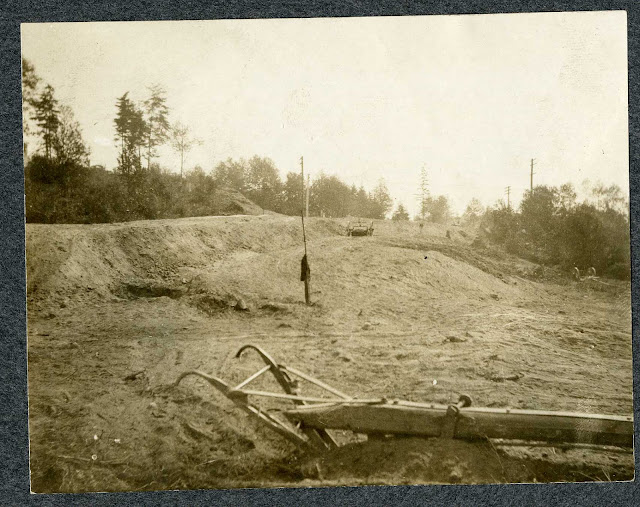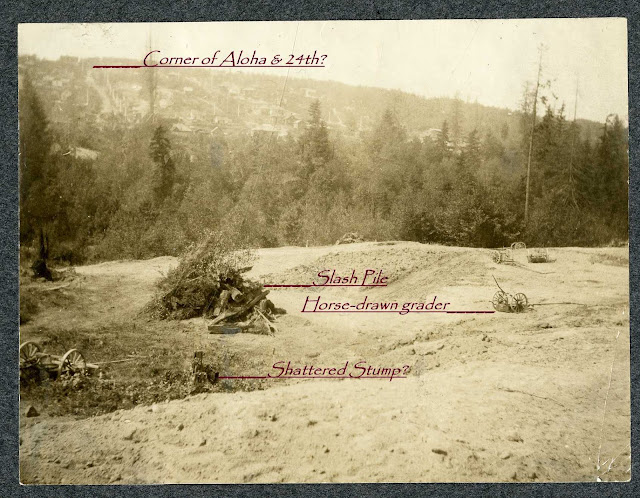In 1902 the city contracted with the Olmsted Brothers to have a grand plan drawn up for a system of connected parks and boulevards. Automobiles had come to Seattle just two years prior but the Olmsted Brothers were sophisticated in their thinking when compared to some others. Their vision acknowledged that the horse drawn buggy was on its way out and that “pleasure drives” in automobiles were the future for Seattle. The shoreline of Lake Washington was a great place to build yet-to-be-planned parks and to locate such a grand connecting roadway with its pleasing and complex curves. In 1904 they sent partner James Frederick Dawson to Seattle to review plans, document progress and ground truth their planned visions for the city.
In August of 1904 construction began on the first section of roadway before the plans had even been finalized. That road started at the east end of the Madison Street Trestle and descended north along the hillside that was tightly squeezed between the deep and wooded ravine to the west (today referred to as Washington Park Playfield) and previously platted land between what we refer to today as Washington Park Playfield and Broadmoor.
Looking down into the ravine in Dawson’s photo you wouldn’t
know that there was a creek running there that drained springs and runoff as far away
as Cherry Street, nearly a mile and a half to the south. West beyond the ravine the sparsely occupied
east side of Capitol Hill rises up in the background. What I believe to be Aloha Street is clearly
visible.
In spite of the hurried start, it would take a year for that
first section of macadam-armored roadway to be completed between Madison Street
and Interlaken Boulevard. The wooded ravine
would be cleared and eventually become a garbage dump, the trestle would be
removed and replaced with fill that remains to this day.
The garbage dump would be smoothed, topped, planted with grass and turned into a really fine athletic venue called Washington Park Playfield.
During my early baseball days, I played for three years for the Flying A's, the team with the worst win/loss record in the Central Little League. I was part of one of the two teams out of
Montlake Playfield and Montlake was a great park. It’s true that the outfield
got a little soft due to being built on a Dahlia field that had flourished on a
peat bog, but it was a beautiful place
to play ball. But whenever we played
Bert’s IGA or Bryant’s Marina at their home field (Washington Park Playfield) I
was stunned by what a perfect baseball park it was. It was nestled in this little valley, ringed
with trees that provided the perfect amount of shade with their emerald
beauty.
We always lost in Washington Park. Heck, Dale and Jim’s Flying A’s lost everywhere we played but the kids who played for Bert’s and Bryant’s always rubbed it in more than other teams. Let’s face it; Whether I was whiffing at Emil Giese’s highspeed left-arm, side-arm breaking in and down slider or Too-Tall (Tom) Podall’s ridiculous fast ball that came through the strike zone at an impossibly sharp downward angle the only thing I had to enjoy during my at bats in Washington Park was the scenery.
Somehow it is pleasing at this stage of my age to learn that
their home field was a garbage dump.
We have to take our victories as we find them.











